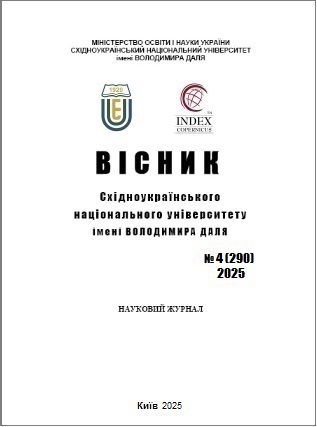Additive technologies for creating thermal conductive polymer composites
DOI:
https://doi.org/10.33216/1998-7927-2025-290-4-48-56Keywords:
polylactide, polymer composite materials, thermal conductive composites, additive technologies, graphite, copperAbstract
The work investigated the influence of the composition of a polymer composite and its additive manufacturing parameters on the value of its thermal conductivity. As a polymer matrix for the research, a typical additive manufacturing, environmentally friendly and affordable polymer material - polylactide was used. Thermally conductive fillers of different nature - powdered copper and graphite, in different mass ratios, were introduced into the composite to increase thermal conductivity and provide the ability to control the thermal characteristics of the material. Composite materials were created by mixing the components in the melt on a twin-screw extruder. Additive manufacturing of experimental samples was carried out using the filament deposition molding technology. The material for additive manufacturing in the form of a filament was obtained from the composite material by extrusion. The samples were printed with the orientation of the layers parallel and perpendicular to the direction of the heat flow, which made it possible to assess the influence of the spatial arrangement of the material jets on the anisotropy of thermal conductivity.
Composite materials based on polylactide, obtained by the classical injection molding method and the additive manufacturing method, showed similar thermal conductivity values. The use of copper and graphite fillers allowed them to significantly increase the thermal conductivity of the material—by more than two times. The orientation of the layers and the location of the material jets relative to the direction of the heat flow have a significant impact on its thermal conductivity. It was found that the graphite filler is more effective compared to the copper one, since it provides a more significant increase in thermal conductivity even at a lower mass content. In addition, the effect of the orientation of the layers and the filler is more pronounced for graphite fillers. This approach may allow the development of lightweight, heat-dissipating polymer elements of housing for electronics, which have both functional and structural significance. The anisotropy of thermal conductivity, controlled by printing parameters, opens new opportunities for engineering design of complex products with optimized thermophysical characteristics.
References
1. Yao, F., You, G., Zeng, S., Lu, D., & Ming, Y. Reaction-tunable diffusion bonding to multilayered Cu mesh/ZK61 Mg foil composites with thermal conductivity and lightweight synergy. Journal of Materials Science & Technology, 2023. 139, 10-22.
2. Zhao, H., Zhang, W., Yin, X., Wu, Y., Du, C., Zhao, W., ... & Liu, C. Conductive polyurethane elastomer electrolyte (PUEE) materials for anodic bonding. RSC advances, 2020. 10(22), 13267-13276.
3. Olivera, A. F., Chica, E., & Colorado, H. A. Design and manufacturing with 3D printing and life cycle analysis of a recyclable polymer-based H-Darrieus wind turbine. Engineered Science, 2024. 31, 1156.
4. Li, T., Wei, H., Zhang, Y., Wan, T., Cui, D., Zhao, S., ... & Cheng, B. Sodium alginate reinforced polyacrylamide/xanthan gum double network ionic hydrogels for stress sensing and self-powered wearable device applications. Carbohydrate Polymers, 2023. 309, 120678.
5. Liu, X., Zhang, J., Zheng, C., Xue, J., Huang, T., Yin, Y., ... &Guiver, M. D. Oriented proton-conductive nano-sponge-facilitated polymer electrolyte membranes. Energy & Environmental Science, 2020. 13(1), 297-309.
6. Ruan, K., Guo, Y., & Gu, J. Liquid crystalline polyimide films with high intrinsic thermal conductivities and robust toughness. Macromolecules, 2021. 54(10), 4934-4944.
7. Kwon, Y. J., Kim, Y., Jeon, Y. P., Hong, J. Y., Park, H. S., & Lee, J. U. Thermally conducting yet electrically insulating epoxy nanocomposites containing aluminum electrochemically exfoliated graphene hybrid. Composites Part A: Applied Science and Manufacturing, 2022. 152, 106675.
8. Ji, J., Chiang, S. W., Liu, M., Liang, X., Li, J., Gan, L., ... & Du, H. Enhanced thermal conductivity of alumina and carbon fibre filled composites by 3-D printing. Thermochimica acta, 2020. 690, 178649.
9. Doshi, M., Mahale, A., Singh, S. K., & Deshmukh, S. Printing parameters and materials affecting mechanical properties of FDM-3D printed Parts: Perspective and prospects. Materials Today: Proceedings, 2022. 50, 2269-2275.
10. Mamunya, Y. P., Davydenko, V. V., Pissis, P., & Lebedev, E. V. Electrical and thermal conductivity of polymers filled with metal powders. European polymer journal, 2002. 38(9), 1887-1897.
11. Zhong, C., Yang, Q., & Wang, W. Correlation and prediction of the thermal conductivity of amorphous polymers. Fluid Phase Equilibria, 2001. 181(1-2), 195-202.
12. Колупаєв, Б. Б. Математичне моделювання теплопровідності лінійних гнучколанцюгових полімерів. Наукові нотатки, 2019. (68), 50-54.
13. Дінжос, Р. В., Лисенков, Е. А., & Фіалко, Н. М. Особливості теплопровідності композитів на основі термопластичних полімерів та частинок алюмінію, 2015. 3(7), 03022-1-03022-5.
14. Burger, N., Laachachi, A., Ferriol, M., Lutz, M., Toniazzo, V., & Ruch, D. Review of thermal conductivity in composites: Mechanisms, parameters and theory. Progress in Polymer Science, 2016. 61, 1-28.
15. Huang, X., Lin, Y., & Fang, G. Thermal properties of polyvinyl butyral/graphene composites as encapsulation materials for solar cells. Solar Energy, 2018. 161, 187-193.
16. Wang, D., Ren, S., Chen, J., Li, Y., Wang, Z., Xu, J., ... & Fu, J. Healable, highly thermal conductive, flexible polymer composite with excellent mechanical properties and multiple functionalities. Chemical Engineering Journal, 2022. 430, 133163.
17. Jing, X., Li, Y., Zhu, J., Chang, L., Maganti, S., Naik, N., ... & Guo, Z. Improving thermal conductivity of polyethylene/polypropylene by styrene-ethylene-propylene-styrene wrapping hexagonal boron nitride at the phase interface. Advanced Composites and Hybrid Materials, 2022. 5(2), 1090-1099.
18. Behera, A., & Behera, A. Additive Manufacturing Materials. Advanced Materials: An Introduction to Modern Materials Science, 2022. 667-700.
19. Zhang, Z., Gkartzou, E., Jestin, S., Semitekolos, D., Pappas, P. N., Li, X., ... & Dong, H. 3D printing processability of a thermally conductive compound based on carbon nanofiller-modified thermoplastic polyamide 12. Polymers, 2022. 14(3), 470.
20. Тепломасообмін: навч. посіб. Ч. 1. / уклад.: Н. М. Гавалешко; Чернів. нац. ун-т ім. Ю. Федьковича. – Чернівці: Рута, 2015. –88 с.

